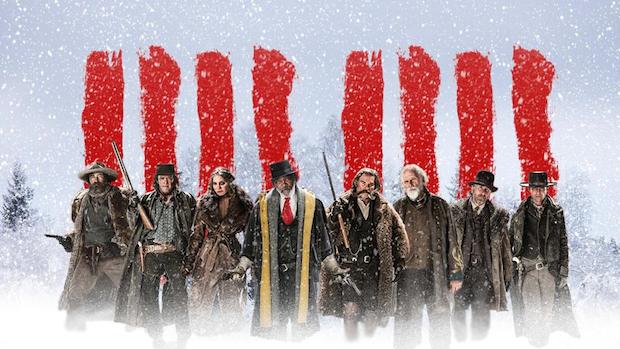
The Hateful Eight (2015) / Western-Thriller
MPAA Rated: R for strong bloody violence, a scene of violent sexual content, language and some graphic nudity
Running Time: 168 min. (70mm print runs 187 min.)Cast: Samuel L. Jackson, Kurt Russell, Jennifer Jason Leigh, Walton Goggins, Bruce Dern, Tim Roth, Demian Bichir, Michael Madsen, Channing Tatum, James Parks, Dana Gourrier, Zoe Bell, Lee Horsley
Director: Quentin Tarantino
Screenplay: Quentin Tarantino
Review published December 24, 2015
 It's Quentin Tarantino's eighth film, and his second Western in a row,
after Django Unchained. It will likely go down as one of QT's
middling works, who is not only still continuing to recycle bits and
pieces from some of his favorite filmmakers of yesteryear -- from
traditional oaters to Spaghetti Westerns to Agatha Christie murder
mysteries to John Carpenter's The Thing (which also features
Kurt Russell) -- but also echoes elements of Tarantino's own prior
works as well, almost to the point of self-parody.
It's Quentin Tarantino's eighth film, and his second Western in a row,
after Django Unchained. It will likely go down as one of QT's
middling works, who is not only still continuing to recycle bits and
pieces from some of his favorite filmmakers of yesteryear -- from
traditional oaters to Spaghetti Westerns to Agatha Christie murder
mysteries to John Carpenter's The Thing (which also features
Kurt Russell) -- but also echoes elements of Tarantino's own prior
works as well, almost to the point of self-parody.